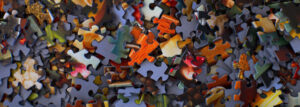Gender Socialization throughout the Life Course
At a Glance
Discipline
- Social sciences
Instructional Level
- College & CEGEP
Course
- Individual and Society
Tasks in Workflow
Social Plane(s)
- Individual
- Group
- Whole Class
Type of Tasks
- Collecting & seeking information
- Discussing
- Writing
- Presenting
Technical Details
Useful Technologies
- Low-tech: Whiteboards; High tech: Shared online board
Class size
- Small (20-49)
Time
- Single class period (< 90 mins)
Instructional Purpose
- Assessment & knowledge refinement
- Application & knowledge building
Overview
In this activity, students complete a grid that illustrates influences during different life course periods – childhood, adolescence, and adulthood – that reinforce gender narratives. These influences come from a variety of agents of socialization and the grid focuses on four broad sets of agents – family, school, peers, and the media.
The instructor begins class with an interactive lecture and discussion of key concepts, which include socialization, agents of socialization, the difference between gender and sex, gender identity, expression, and sexual orientation.
The instructor divides the class into 6 groups and each group is assigned two squares, ideally with different time periods and different agents. Individually, students reflect on their squares at home to come up with two examples from their own experience, which they share in the next class. This activity really comes to life if students are encouraged to bring visuals (photos, or media links) to go with their examples.
In the following class, each student shares at least one personal experience with their group. Together they choose 2 or 3 of the most interesting examples from their group for each of their assigned squares. Then groups selected by the instructor present these examples to the class. The Instructor can take this opportunity to break up presentations to share thought provoking examples using multimedia. Students are encouraged to identify other squares they would like to go through together. Meanwhile, students are expected to record these examples on their own grid handout.
As homework students are asked to complete the grid. They choose 1-2 examples for each square from the options presented in class that they think are the most clear and effective examples for them. The grid can be submitted as a possible formative assessment.
The students can post photos from their selection of examples to an online resource that becomes an artifact for them to use as study material for a later assessment. The instructor can validate students by integrating their work (pics and visuals) into the lecture slides for future review and reference.
Instructional Objectives
Students will be able to:
- Identify gender socialization from childhood, adolescence and adulthood
- Associate gender socialization with their own experience from childhood, adolescence and adulthood
- Relate their experiences with those of their peers
Workflow & Materials

Activity Workflow
Applied Strategies
Published: 26/08/2020
Copyright: © 2024 Legassic. This is an open-access article distributed under the terms of the Creative Commons Attribution License (CC BY). The use, distribution or reproduction in other forums is permitted, provided the original author(s) and the copyright owner(s) are credited and that the original publication on this website is cited, in accordance with accepted academic practice. No use, distribution or reproduction is permitted which does not comply with these terms.


